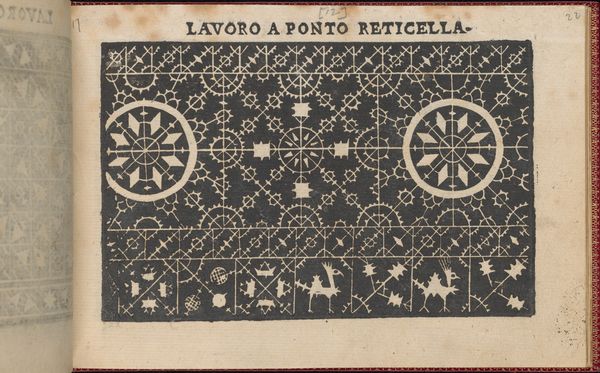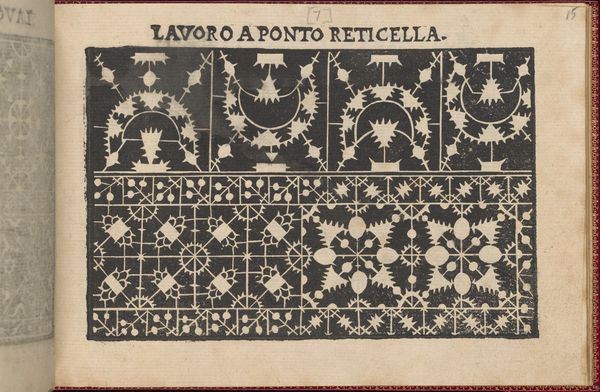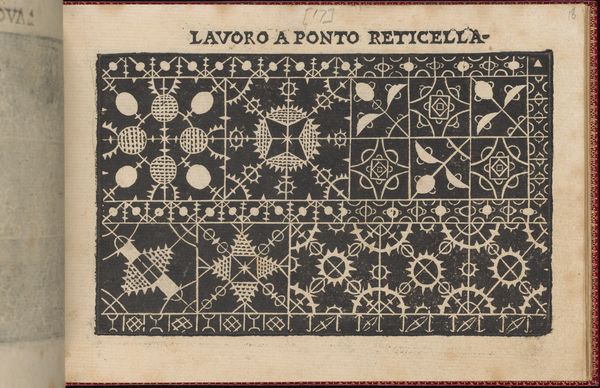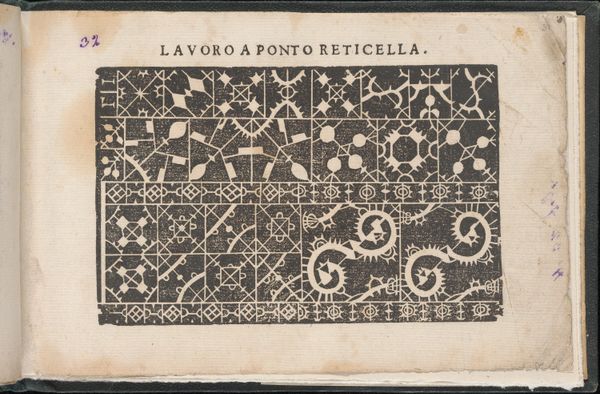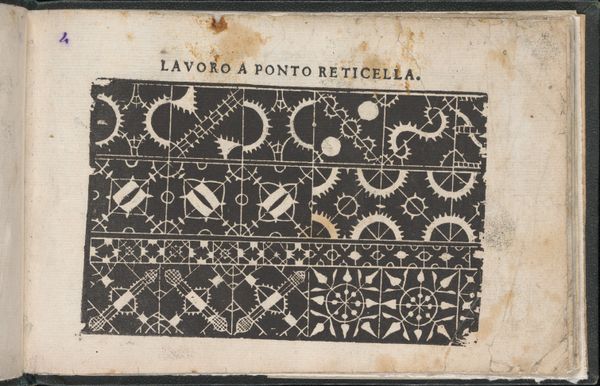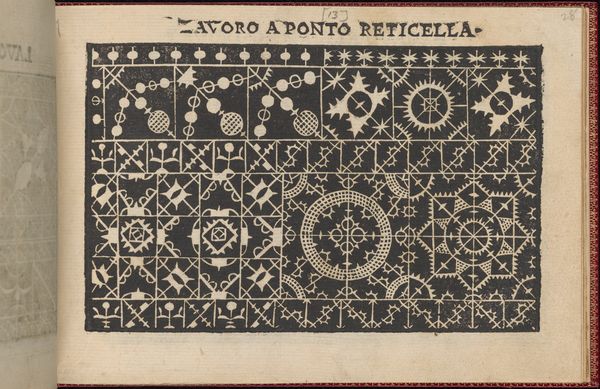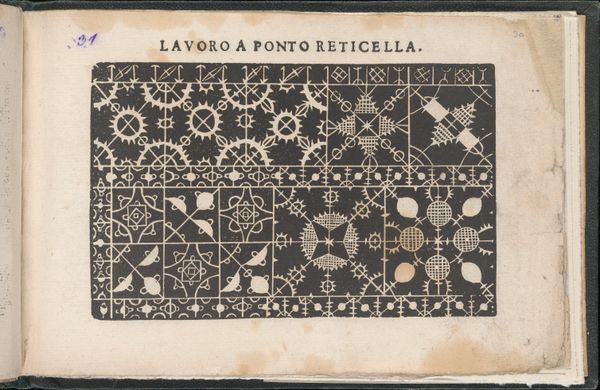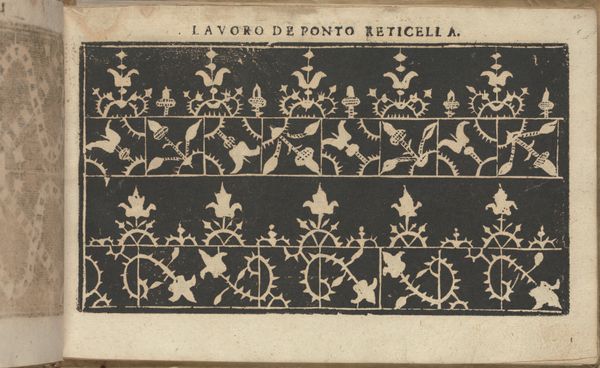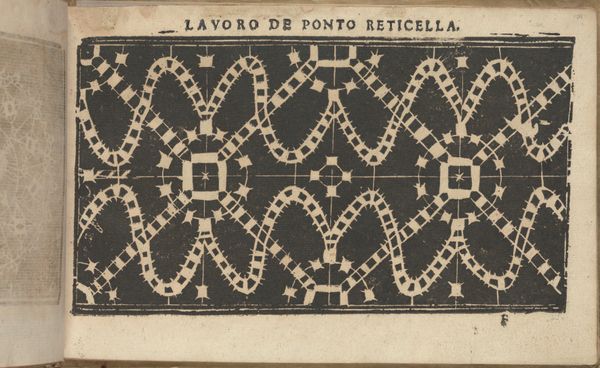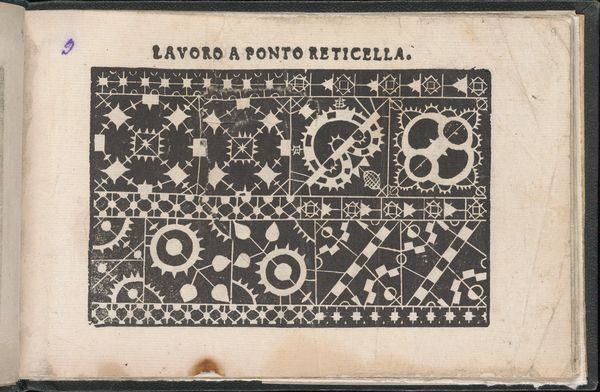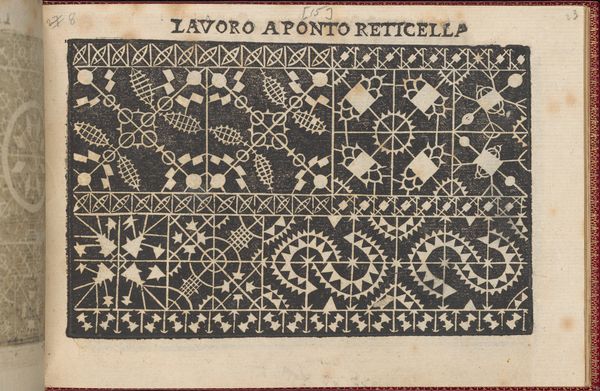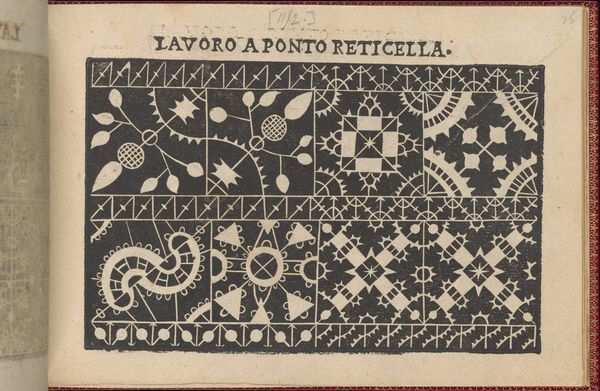
Pretiosa Gemma delle virtuose donne, page 15 (recto) 1600
0:00
0:00
drawing, graphic-art, print, paper
#
drawing
#
graphic-art
# print
#
paper
#
decorative-art
#
italian-renaissance
Dimensions: Overall: 4 3/4 x 6 11/16 in. (12 x 17 cm)
Copyright: Public Domain
Editor: Here we have "Pretiosa Gemma delle virtuose donne, page 15," a print on paper made around 1600 by Isabella Catanea Parasole. It features a series of intricate patterns; they almost resemble blueprints for lace. I find the juxtaposition of mechanical gears and organic shapes really striking. What can you tell me about this page? Curator: What interests me here is thinking about the act of production, who is materially producing it, for what end, and within what context. These weren't considered "high art" but patterns circulated among women, functional in design. This wasn't an artwork to hang on a wall; it was meant to be used, copied, adapted. Editor: So, this page wasn't created for a museum, but more as a…template? How does the context affect the way we understand its patterns and place in art history? Curator: Exactly! Consider the material conditions. The production of lace was laborious, often performed by women, generating value within the domestic sphere. Parasole's prints made such work accessible, in a sense, commodifying it, but also acknowledging and celebrating a certain female craftsmanship that otherwise remained unseen and unacknowledged. Editor: That's fascinating! Seeing this page as an early form of accessible design, mass-produced to facilitate the labor of countless women... It definitely shifts my perspective from merely appreciating its aesthetic qualities. It invites questions about the socioeconomic status of female lacemakers. Curator: Precisely. It reveals the inherent link between artistic creation, gendered labor, and its economic significance. How patterns move, who has access, who owns and creates value. Editor: Thanks for that perspective! It's made me realize how much richer these patterns become when we consider the social and material context of their production and consumption. Curator: And that realization transforms how we perceive value— artistic, economic, and social— itself.
Comments
No comments
Be the first to comment and join the conversation on the ultimate creative platform.
